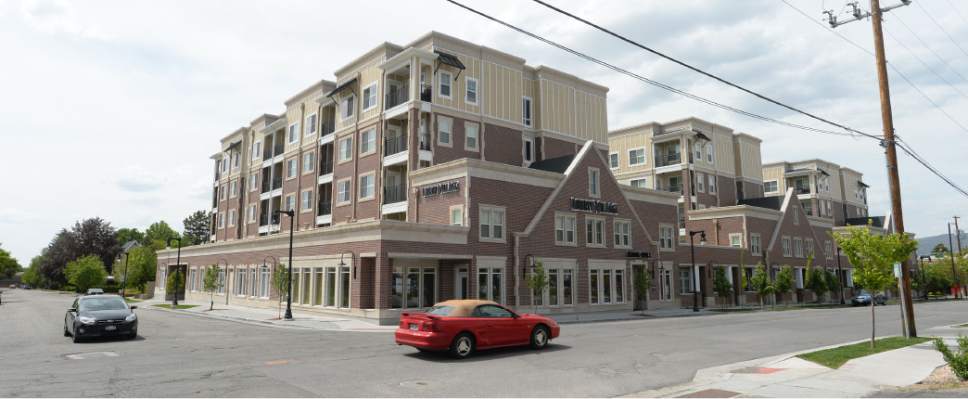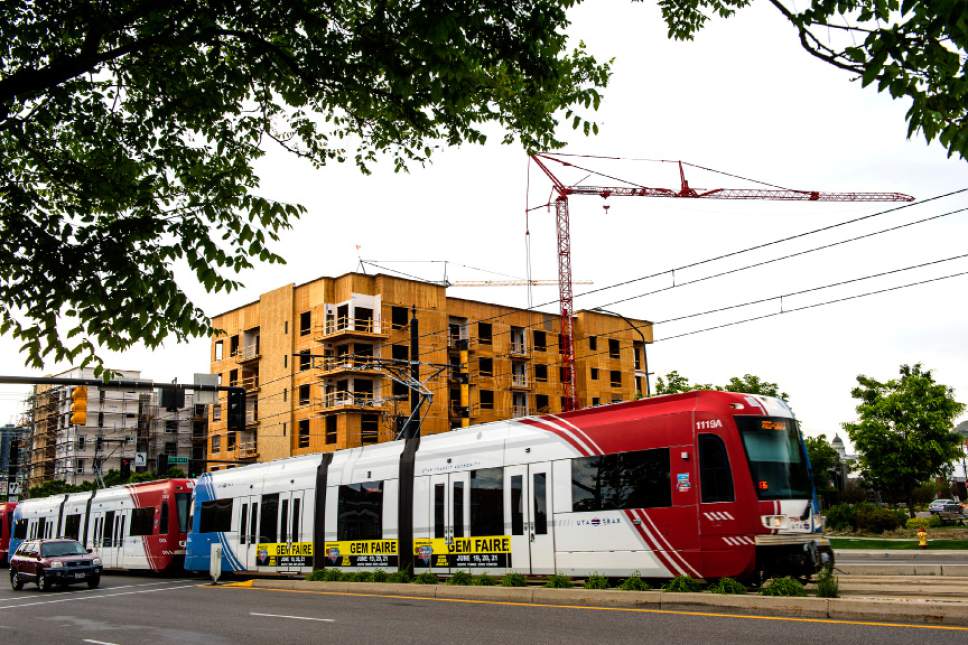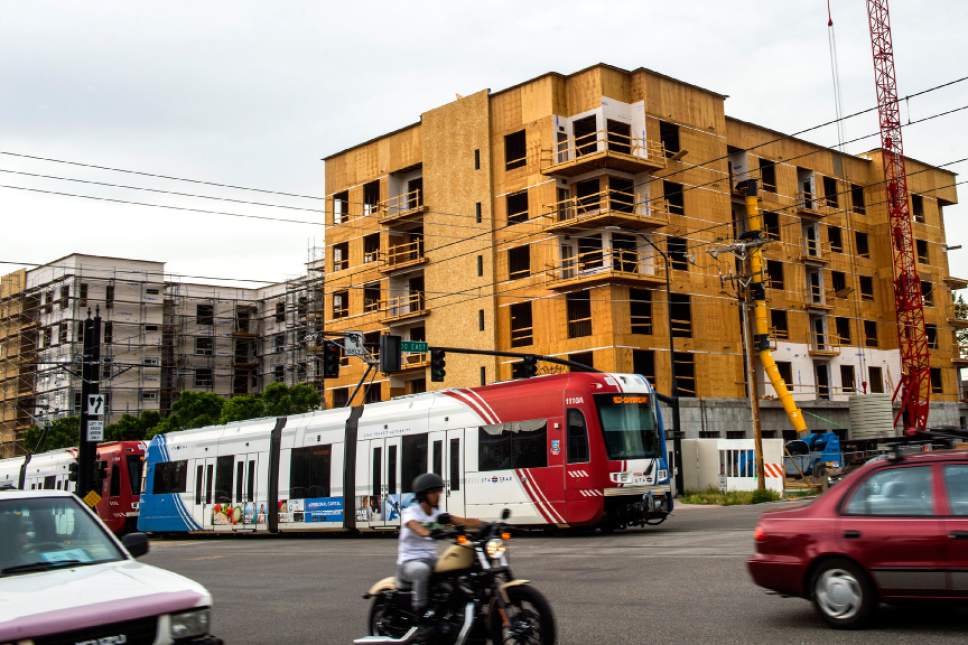This is an archived article that was published on sltrib.com in 2015, and information in the article may be outdated. It is provided only for personal research purposes and may not be reprinted.
Without more favorable rules from Utah cities for higher-density housing such as apartments, town houses and single-family homes on smaller lots, future generations are likely to face severe problems in finding decent, affordable places to live.
More young families will move away to find homes within their budgets.
Those staying will spend more on housing and fuel costs as they drive farther to and from work. Neighborhoods where folks with varying incomes live side by side will become increasingly rare, dampening opportunities for low-paid workers and their families.
That downbeat scenario emerges from computer models being developed by Envision Utah as regional planners study what the state's housing and transportation patterns may look like by 2050, when Utah's population is expected to double to nearly 6 million.
"Land is becoming scarcer close to major job centers, which means land and housing prices are rising," said Robert Grow, president and CEO of Envision Utah. "It also means people have to drive farther, which increases the cost of living."
But these problems can be eased, models suggest, with more zoning that encourages density, mixing of housing types in the same areas and development of more commercial centers within walking distance from where people live and work.
"There are things we can do to keep Utah affordable," Grow said, "if that's what we choose."
At the behest of Gov. Gary Herbert, the nonprofit group is encouraging Utahns to voice their preferences for how to manage growth during the next 35 years. More than 30,000 residents already have registered their views as part of "Your Utah, Your Future" — a survey-turned-computer game offered at Envision Utah's website, envisionutah.org.
The online poll is accessible through May. Results are intended to serve as a touchstone on public sentiment as elected leaders shape growth-related policies, including for transportation and affordable housing.
Many suburban cities along the Wasatch Front restrict higher-density housing construction, including apartments, condominiums, town homes and single-family houses on smaller lots. Mandatory minimum lot sizes are common for single-family housing subdivisions, while multifamily developments with high numbers of units per acre often face intense scrutiny.
Apartments are commonly perceived by city officials and existing homeowners as threats to a neighborhood's character or potentially increasing traffic and crime.
In recent years, residents of Layton and Saratoga Springs have voted to curb high-density developments. West Valley City declared a moratorium in October on all new housing to allow Utah's second most-populous municipality to study the best uses of its shrinking stock of available land.
"There's just no appetite in many of these places to approve apartments of any kind, let alone high-density housing near transit that makes sense," said Paul Smith, executive director of the Utah Apartment Association, a trade group.
While public attitudes are slowly shifting, said Layton Mayor Bob Stevenson, who is a homebuilder, "it doesn't matter what city you're in, you're going to see some of the 'not in my backyard' view on these projects. People are naturally protective of their homes in light of new stuff coming in."
Under an Envision Utah scenario with little municipal tolerance for high-density housing, most Utahns a generation hence would live either in large-lot suburban homes or high-rise downtown buildings in Salt Lake City, Provo, Ogden or Sandy. Because both carry high construction costs, many residents would find housing unaffordable and encounter tough financial trade-offs.
Today's typical Utah household devotes about 30 percent of its income to housing and utilities and another 30 percent to transportation such as fuel and maintenance for two vehicles. That burden is commonly higher for residents at the lowest income levels, with home, utility and car expenses consuming up to 93 cents of every dollar they earn.
Envision Utah's little-density scenario predicts that the average household spending on transportation would skyrocket by 2050, to about $19,660 a year. Per-household costs to pay for roads, water and sewer lines would top $30,000.
Rules that accommodate higher densities but still keep them separate from more traditional housing types would lower those costs slightly, computer models show.
While zoning obstacles persist, transit-oriented apartment complexes and mixed-use projects are popping up across Utah's metropolitan areas amid a nationwide spike in demand for rental housing, particularly among cash-strapped young adults.
Downtown Salt Lake City, Sugar House, South Salt Lake, South Jordan, Ogden, Clearfield, Layton, Farmington and Provo all have or are exploring high-density mixed-use developments near rail stations.
Utah's capital, in particular, has pressed rezoning along the key transit corridors of 400 South and North Temple to encourage multistory residential construction.
"Salt Lake City is doing a good job," said Smith, with the apartment association. "And there are other cities, too, but not enough."
Daybreak, a master-planned community in South Jordan, was originally laid out on reclaimed mining land as a high-density, sustainable, walkable series of neighborhoods with mixed housing, primarily single-family homes with smaller yards. Located at the southwestern terminus of the Utah Transit Authority's TRAX Red Line, the development continues to enjoy robust housing sales 10 years after it opened.
A recent study of federal housing assistance indicates that transportation, devouring the second biggest budget bite for most Americans, is sometimes overlooked in government calculations on housing affordability.
Those costs were especially high for residents living on the fringes of urban areas, according to University of Utah planning professor Reid Ewing and U. doctoral candidate Shima Hamidi. That is partly because cheaper alternatives such as mass transit tend to be less available in suburban locales compared to city centers.
"There is a clear trade-off between the housing and transportation expenses for working families," Ewing, director of the U.'s Metropolitan Research Center, and Hamidi wrote in a 2014 study of federal Housing and Urban Development aid recipients.
In two future scenarios, with various types of high-density housing development more widespread, Envision Utah's models indicate residents were more likely to find homes suited to their earnings.
Residents also tended to live closer to places to work, play and shop, lowering their transportation tabs.
"If you create an artificial shortage of housing, you drive costs up," Grow said. "That's true whether you don't have enough total housing, or if you just limit one kind of housing."
Twitter: @TonySemerad —
With Utah's population expected to double by 2050, residents and policymakers face key planning decisions that will directly shape that future.
In one of the largest public-polling efforts in state history, Envision Utah is inviting residents to take an online interactive survey to gauge public views on 11 major issues such as air quality, water, transportation, energy and housing.
The "Your Utah, Your Future" poll — accessible at envisionutah.org — is open to all residents through May.











